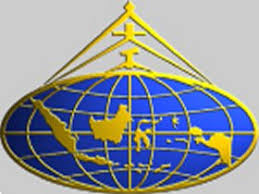The Importance of Risk Mapping
When a Community Based Action Team (CBAT=Sibat) has been established in one of our villages receiving help from the Community Based Disaster Preparedness (CBDP) programme, one of its first activities is to make a risk map of the village. Using Global Positioning System (GPS) technology, the CBAT gathers basic data of the village, such as all houses, roads, boundaries, schools, houses of worship, wells, field, forest, etc. It is vital to identify the areas exposed to disaster risks and to determine the number of households and people living there. This way we will know how many people are at risk.
The CBAT will then hold a meeting at which all members of the community are invited to discuss the risk map. The community will make a prioritized list of all the risks they see on the map. The risk that poses the greatest threat and potential for losses should be first on the list, while the least important threat should be last.
All risks must be depicted on the map.
Using this list, the community now makes an action plan. The action plan should cover the next five years and try to prevent or mitigate the risks identified. The risk map and the action plan should be reviewed and updated every year to ensure maximum protection and prosperity in the community.
Once the list of risks has been translated into action plan, mitigation measures should be discussed through cooperation between the community, PMI (Indonesian Red Cross) and the local government. The community is the most important player in this process and should carry out the necessary work without being paid. The CBDP programme will pay some of the expenses and hopefully the risk map will have convinced the local government to pay remaining expenses and endorse the action plan.
How We Make a Risk Map
Members of the CBAT divide into pairs, with each tw-person team mapping specific features in the lanscape with their GPS (Garmin eTrex Vista). one team plots houses, another wells, a third schools and houses of worship, etc. Other teams map roads, rivers, coastlines, etc. One team will walk the entire perimeter of the community to show the boundaries of the village on the map.Some teams will identify areas where there certain risks. They walk the high waterline of the worst flooding or estimate the raech of possible landslide, find where tsunamis could reach, or where erosion or abrasion thretens houses, etc. One team will identify evacuation routes and indicate safe places for people to stay if a disaster happens. All teams keep carefull records of their collected data.
If there are not enough people to collect data within one day, the mapping could be carried out over several days. At the end of each day, all teams meet and upload their data from the GPS to a computer (MapSource software). Once all the data has been compiled, it will be put together to make a basic map.
Using an LCD projector, the map is projected onto a large sheet of transparent plastic hanging on a wall and competent member of the community is called on to draw the map, which is full of usefull information. All memebers of the community will then be able to use the map to discuss what can be done to avoid disasters or what to do when the next one happens. The maps are also a very important tool to get support from the local government, as a good map says more than a thousand words when negotiting for government support.
There is no doubt, that throughout Indonesia these maps will save many lives and make people and government much better prepared for disasters.
But, don't forget that a map could cause disagreements in the community, especially over the size and ownership of certain landholding. In such cases, seek official data and hold a discussion to resolve any disagreements.
An Example: In village X the CBAT has made a risk map of the entire village. The risk map shows that in large area 70 houses are threatened by flooding. On the other side of the village, about 20 houses are threatened by landslides from a nearby mountain. Along the river, erosion threatens 10 houses and approximately 200 houses would be at risk if a big tsunami came. Moreover, some health issues also emerged during the discussion of the risk map. These are malaria, which often claims fatalities, and a high frequency of stomach problems, such as diarhoea.
The residents of village X then make the following prioritized list:
(1) Flooding, because it thereatens 70 houses and because it occured three times duting the last 10 years;
(2) River bank erosion, because it threatents 10 houses and they will all be destroyed by the river within the next three or four years if nothing is done;
(3) Tsunami threat, because people are becoming increasingly afraid of tsunamis and now consider them a real risk;
(4) Landslides, because 20 houses are threatened and the risk may increase by cutting down trees;
(5) Malaria, because last year there was 80 cases of malaria;
(6) Clean water, because people often fall ill during severe floods due to a lack of clean water.
Based on the above list, the residents of village X make a five-years action plan.
The action plan is based on a judgment of which risks are most serious and when it is convinient to address each risk. Several activities can be carried out simulataneously. Happy working!
(From Siaga -a disaster preparedness media - Ed.05/September/2006)

































0 komentar:
Post a Comment